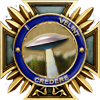Right, because EQ2 good / evil alignment locked the specializations they were inherently doubled - so there is a lot in EQ2 as an example to consolidate, as most differences where names of skills and a few (very few) specialties. Didn't they combine many in current EQ2?
They kind of did the opposite. While it's true most subclasses felt functionally similar to their counterpart at launch, that had changed pretty drastically by the launch of the 4th expansion (Kunark).
Warriors: Berserkers got more AoE damage and threat tools, Guardians got more defensive tools
Crusaders: Paladin and SK were already very different so not much needed to change here
Brawlers: Monks gained more defensive support skills and Bruisers gained offensive support skills
Sorcerers: Wizards doubled down on single target damage while Warlocks doubled down on AoE
Summoners: Conjurers got more offensive support, Necromancers got more direct damage
Enchanters: Coercers got more defensive support, Illusionists got more offensive support
Druids: Wardens got more and stronger heals, Furies got more damage and offensive support
Clerics: Templars got more raw healing, Inquisitors got more offensive support
Shamans: Mystics got more well-rounded support while Defilers got more main tank support
Predators: Rangers and Assassins were already pretty different
Rogues: Swashies got more tools to debuff mobs' offense while Brigs got more tools to debuff mob defenses
Bards: Troubadors got more buffs that boosted Mages and Priests while Dirges got more buffs that focused on Fighters and Scouts
These increased specializations allowed you to build more optimal group and raid comps if you had access to people on those classes, but they never felt required for any content. While balance was never perfect, I never felt like it was in a state where one class completely overshadowed every other in its role (except for the very beginning of Kunark when SK and Assassins were totally overpowered, but that was eventually sorted out).









